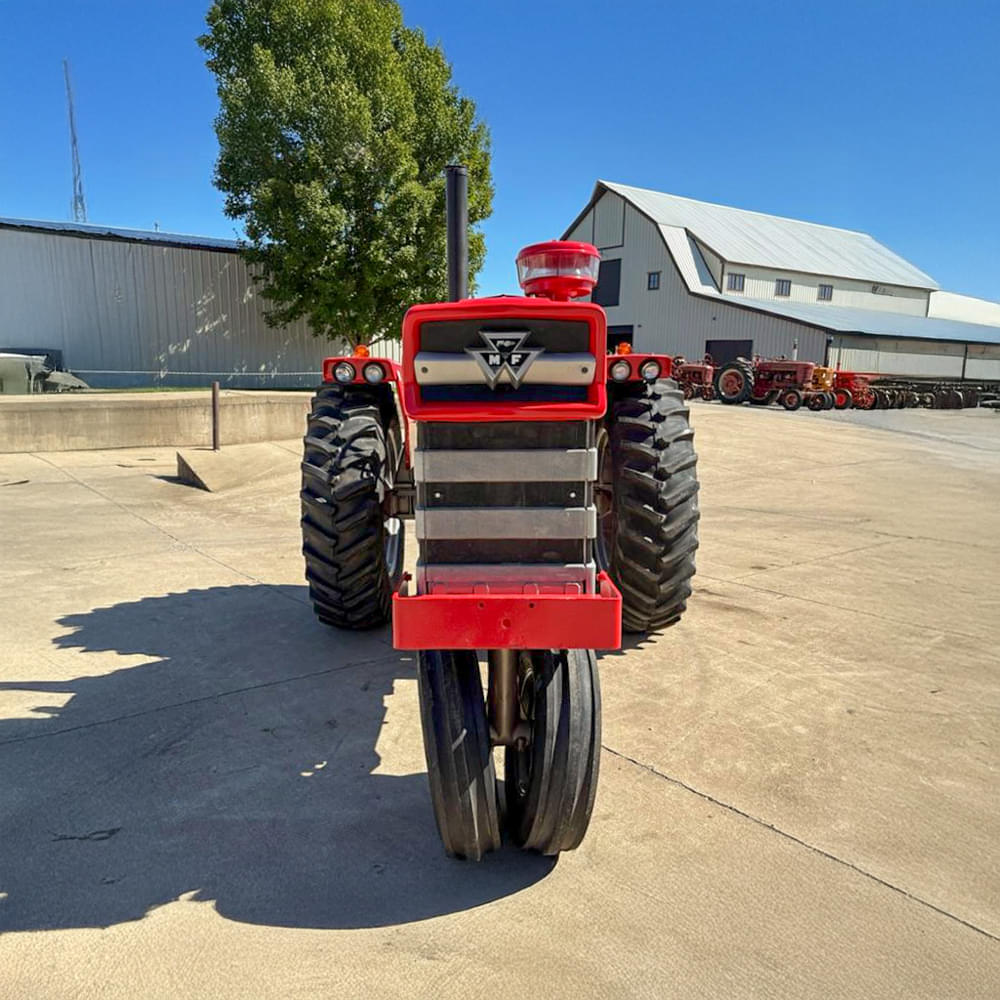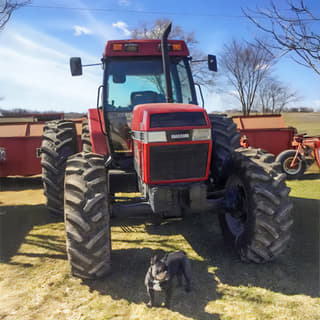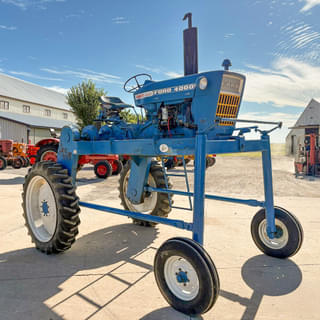This is just my personal opinion, but I think the 1100, 1130, and 1150 are the best-looking tractors Massey ever built. There’s something timeless about their design—clean, confident, and perfectly balanced. I’ll die on that hill.
So when I scouted Jon Kinzenbaw’s collection before our video shoot, this one caught my eye right away. It’s a beautifully restored 1969 model 1130, one of roughly 150 tractors Jon’s decided to part with in his auction ending November 4, 2025.
Here’s the link to the listing.
Now, let’s take a closer look at the history behind the 1130—and hear what Jon had to say about his.
Going in-house
When Massey Ferguson came together in November of 1957, they didn’t really have a “big” tractor to sell to row-crop farmers. Their smaller models had done well, but the lineup needed something more. So what do you do when you don’t yet have the resources to build it yourself? You go shopping.
Massey partnered with Minneapolis-Moline and Oliver to fill that gap. Moline painted their GVI and G705/706 models red and rebadged them as the Massey 95 and 97—2WD and FWA versions, respectively. Oliver did the same with their 990, which became the Massey 98. It was a stopgap plan, but it bought Massey time to build the infrastructure they’d need to design tractors in-house.
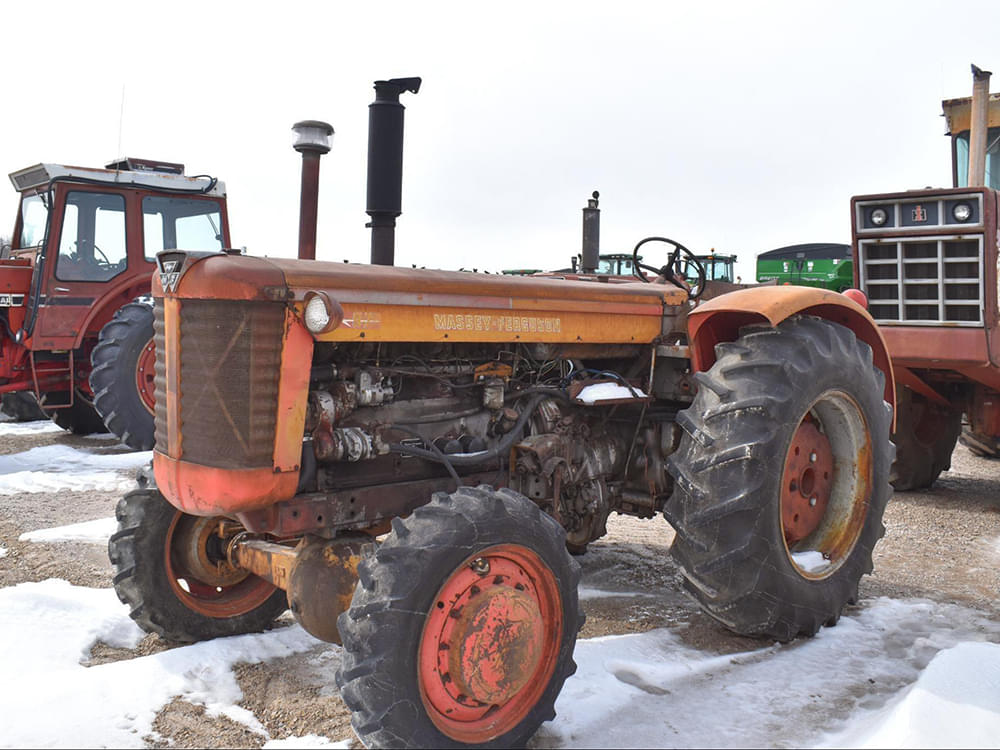
By the early ’60s, though, Massey was ready to chart its own course. They bought Perkins in 1959 to secure a reliable engine supplier and established the Advanced Project Engineering group in Livonia, Michigan, just west of Detroit. Under the direction of Lee Elfes, that team began developing the “Red Giants”—the 100 and 1100-Series tractors that would debut as 1965 models.
The “Giant-est” Red Giant: the Massey 1130…
(Yes, I know. The 1150 was bigger, but it didn’t come out until the 1970 model year, and it was only sold in North America.)
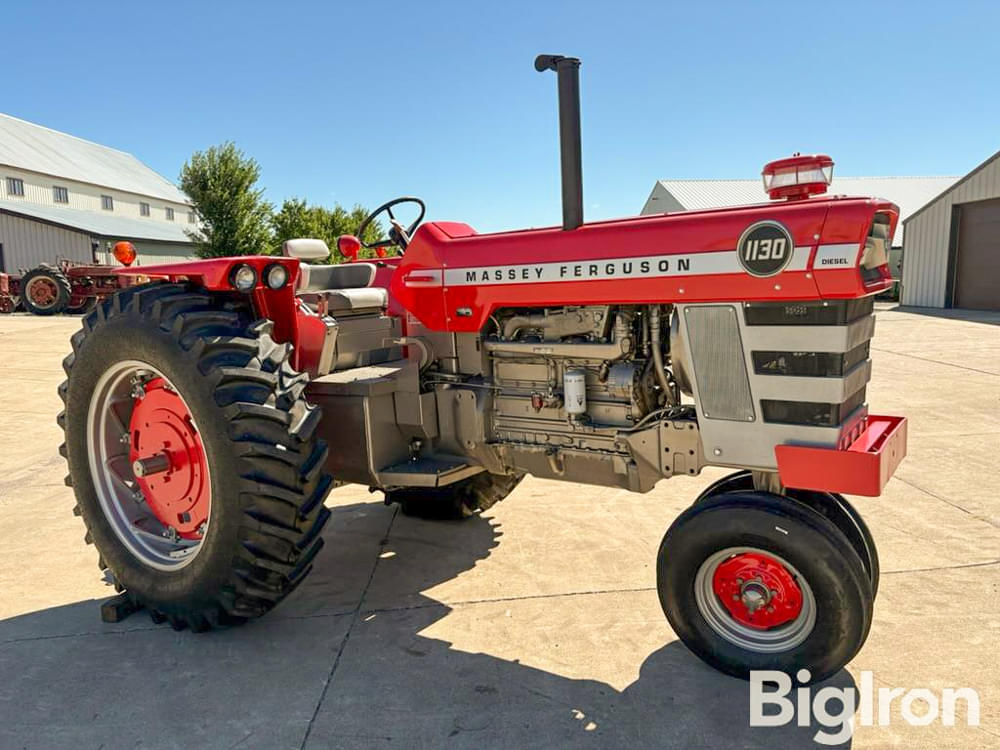
Prior to 1965, Massey Ferguson’s big tractors didn’t exactly turn heads. The lineup was a patchwork of Oliver and Minneapolis-Moline designs. They worked fine, but they didn’t make farmers think, “Massey’s on to something.”
However, under Lee Elfes’ supervision, that would change with the 1100 and 1130. Both machines shared the same platform and a 354-cubic-inch Perkins diesel under the hood. But they were all-new designs, and they were built in-house with renewed energy and focus. Massey wanted to be a player.
The 1100 was naturally aspirated and came in diesel, gas, or LP flavors. (The gas and LP versions used 320-cube Waukeshas and were added later.) Buyers could pick either a simple 6-speed or the 12-speed Multi-Power power shift transmission—and from what I’m told, the 12-speed was definitely the move. At around 90 horsepower, it was a dependable, efficient machine—and the first real sign that Massey was getting its footing.
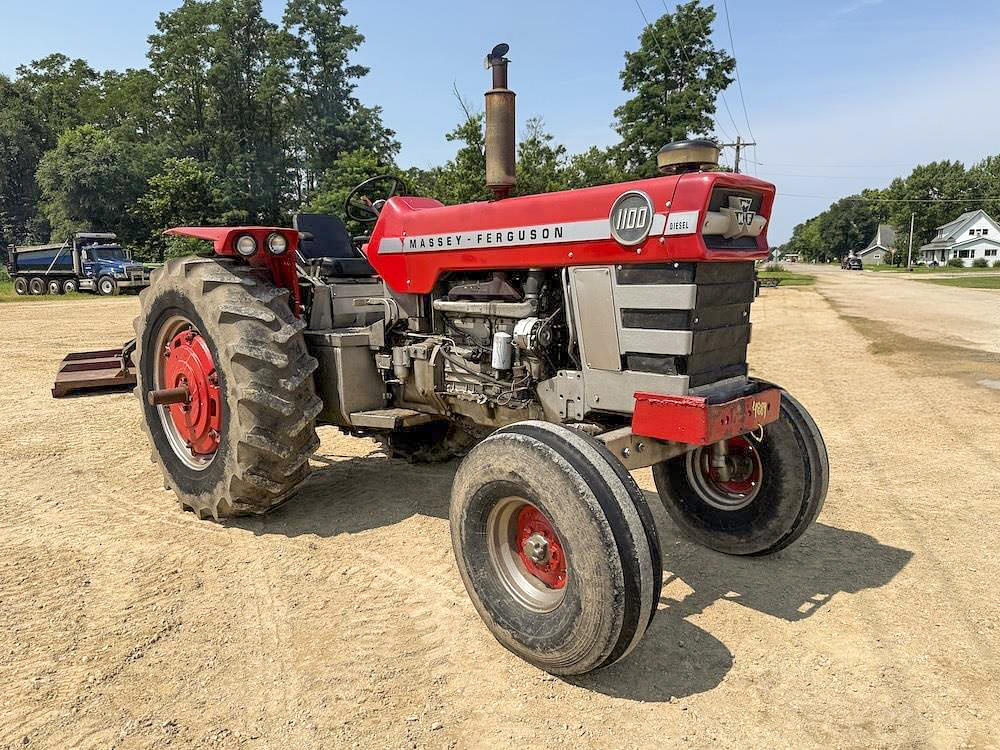
Next to it was the 1130. That’s the one that really put Massey on the map. Despite being a pretty small-cube motor, bolting a turbo onto that Perkins woke it up in a hurry. It was diesel-only, all business, and surprisingly efficient for its day. At full load, it burned just 7.6 gallons of fuel per hour. Not bad at all for a 120-horse tractor in the mid-’60s.
And here’s the kicker. Just a few years earlier, Massey had badge-engineered hand-me-downs to fill the big end of their lineup. But by the mid-’60s, the 1100—and especially the 1130—proved Massey could stand on its own two feet. They weren’t just good tractors. They were proof that Massey Ferguson had finally arrived as a serious player in the American horsepower game.
But anyway, let’s talk about this narrow-front that’s on Jon’s auction. It’s a pretty neat machine!
Jon Kinzenbaw’s 1969 Massey Ferguson 1130
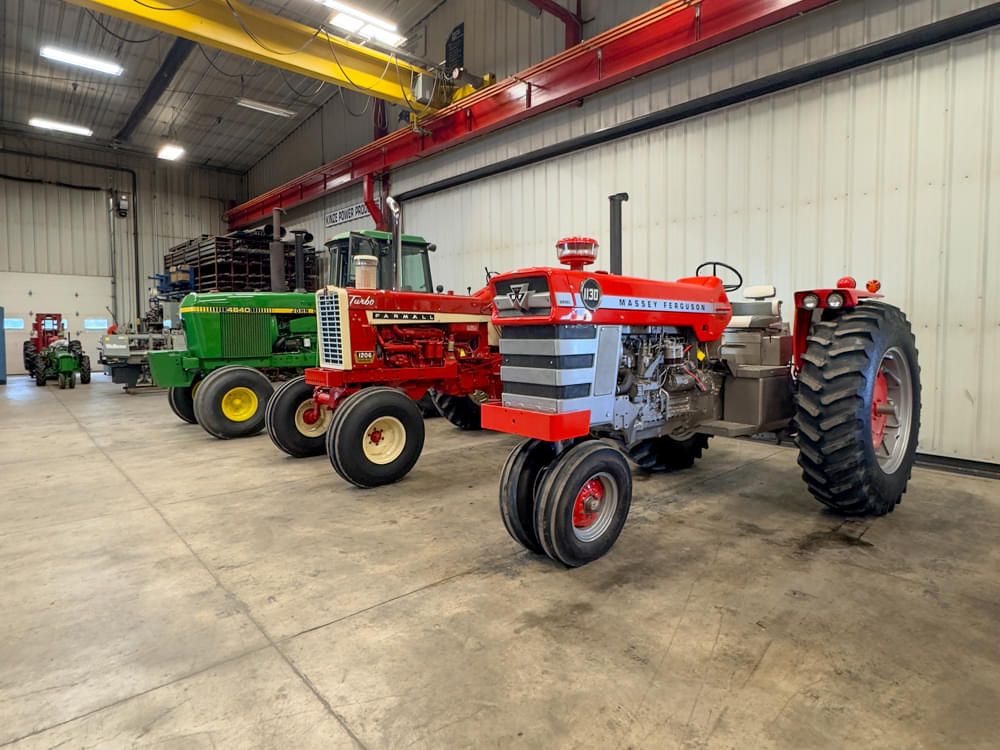
The Massey 1130 on Jon’s auction is a beauty. That shouldn’t surprise anyone—Jon has a sharp eye for quality, whether it’s an original survivor or a top-notch restoration. He picked this one up about seven years ago at Mecum’s Gone Farmin’ sale when it was still held at the Mississippi Valley Fairgrounds in Davenport. The narrow front caught his attention right away, along with the high-caliber restoration. And honestly, I get it. It’s a sharp tractor.
Since then, he’s only added about four hours to the meter. It now shows 4,220. When Jon bought it, the tractor had a new clutch, radiator, seat cushions, and a fresh set of Firestones. Those Firestones still look brand new today. The paint is gorgeous, too—probably a two-stage automotive finish by the look of it.
But don’t just take my word for it. Jon shared a few thoughts when we shot a video about this tractor. You can hear the story straight from him right here.
What’ll it bring?
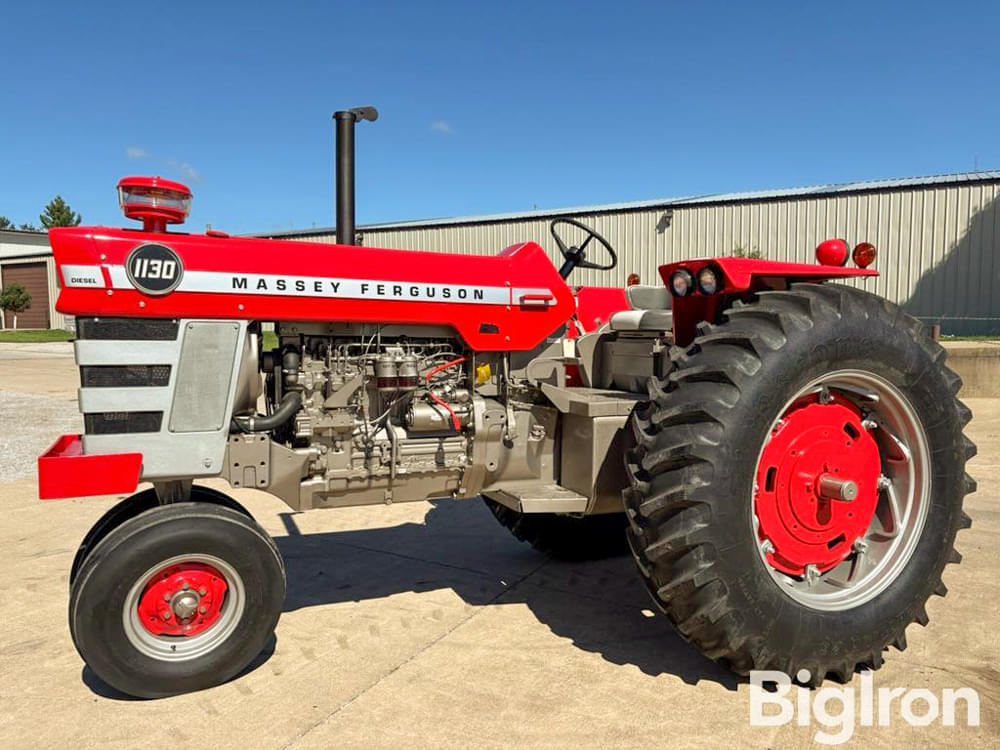
We don’t see a ton of 1100-Series Massey Fergusons at auction in a typical year—and restored ones are even rarer. But a few months back, Dan Kuhns sold an 1100, 1130, and 1150 during Alex Kerr’s inventory reduction sale for Kuhns Equipment, and all three set new records. The 1130, a beautifully restored wide front, brought $29,000. That’s a big jump from the roughly $5,500 average we’ve seen from other 1130s this year.
Jon’s tractor, though, is the less common version—a narrow front. I checked our TZPro database, and every 1130 sold in the past six years has been a wide front. That could influence the final hammer price, but without hard data, it’s tough to say how much.
Provenance could play a role, too. I don’t believe Jon’s ever had a collector tractor auction before, but he and his collection are well-known and well-respected. It’ll be interesting to see if there’s a little “Kinzenbaw Effect” baked into the bidding.
Either way, it’s a gorgeous tractor, and I can’t wait to see where it lands when the dust settles.
Here’s the link to the sale so you can poke around and see what else is up for grabs!

